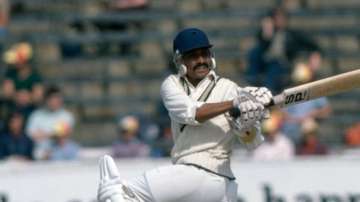Chetan Chauhan: Guts and Grit and that elusive hundred
Chetan Chauhan was a very secure man and probably someone whose biggest strength was knowing about limitations, something that he believed helped him as an administrator and politician later in life.

Imperfection has its own charm as Chetan Chauhan would say about that elusive Test hundred which he so richly deserved but had no regrets missing.
Chetendra Pratap Singh Chauhan, who breathed his last at 73 on Sunday after battling COVID-19, was a very secure man and probably someone whose biggest strength was knowing about limitations, something that he believed helped him as an administrator and politician later in life.
When asked how he felt getting out nine times between 80 and 97, he would laugh playfully with a cup of tea in his hands watching another one of Delhi's Ranji Trophy games at the Feroz Shah Kotla.
"It was destiny probably but I have seen people being more disappointed about that hundred than me. I have no regrets. I have played 40 Tests for India and was Sunil Gavaskar's opening partner," he would say proudly.
For a generation that didn't watch Chauhan, he was one of the first Indian international cricketers to wear a helmet which he believed helped his game.
A strong back-foot player, who could ride the bounce, Chauhan's finest phase was between 1977 to 1981 when he was a regular with Gavaskar at the top of the order.
Yet the most endearing memory for all YouTubers will be how Gavaskar called him to leave the ground in Melbourne after being unhappy with Dennis Lillee's boorish behaviour during India's famous victory.
Was Gavaskar out or not out sir? Journalists would often ask him and he would start laughing.
But during numerous interactions with him, what stood out was his reverence for his opening partner and his greatness.
"Sunny bahot bada batsman thaa. Tum bacchon ko koi idea nahi hain. Humse pucho. 2000 run karne mein kitne Ghode kholne pade aur uske 10 hazar run the (Sunny was a big player. Imagine how difficult it was for us to score even 2000 and he scored 10,000)," said the man, who held his own against Bob Willis, Mike Hendricks and Ian Botham at the Oval in 1979, was fantastic against Lillee, Len Pascoe and Rodney Hogg on bouncy Australian tracks.
He never believed in beating around the bush when he spoke about Indian cricket or for that matter Delhi cricket. The journalists, who covered Delhi cricket, loved him.
Not because he was available for a comment on any cricketing issue but the amazing stories he would tell.
"Bahot bekaar players bhi 70s aur 80s mein khel gayein hain India ke liye," he once said standing at Roshanara ground.
He gave a list and then said I hope no one is recording anything."Tum sab apne bache ho," he would say smilingly.
Chauhan sir, as he was called, could be incredibly funny without even trying.
Sample this.
One journalist once asked him, "Sir, who is the worst first-class cricketer to have played Ranji Trophy in the last 50 years?"
There was a wide grin and then came the clincher.
"Bataoonga par kahin pe quote toh nahi karogey na?" Everyone promised and he spelt out a name, a very well known administrator in later years.
But Chauhan wasn't just fun. He was a serious man who handled cricket in the most difficult and arguably the most corrupt state body under the aegis of BCCI -- Delhi and Districts Cricket Association (DDCA).
And he had a bunch of superstars to handle. Once Gautam Gambhir and Virender Sehwag were done with their India days, it wasn't an easy job to handle the two stars but Chauhan managed that with elan.
There would be times when his contemporaries from Indian and Delhi cricket would rip him to shreds on DDCA matters but hardly would he lose his cool.
Politics and time spent in Parliament as an MP made him patient and at one level thick-skinned which is necessary for administration.
He had issue based public difference of opinion with Gambhir on Navdeep Saini's selection in the Delhi team and both were correct. Chauhan went by the book, Gambhir by emotions.
Then once he was made chairman of the National Institute of Fashion Technology, a political appointment that drew criticism and in one of the fashion pages, he was ridiculed using a picture of him in a cowboy hat and captioned "Shikari Shambhoo".
The next day he wasn't angry but tried to explain that his post is not about knowing fashion but clearing cheques and putting administration in order.
"Kya bolun, they don't even understand," he said.
The lasting picture of Chauhan would him clad in a track suit at 8:30 am on any chilly December morning, walking down to the pitch, talking to groundsmen, walking a few more laps, going the gym, spending an hour, before changing into formals to watch the match.
Kotla will miss Chetan Chauhan.